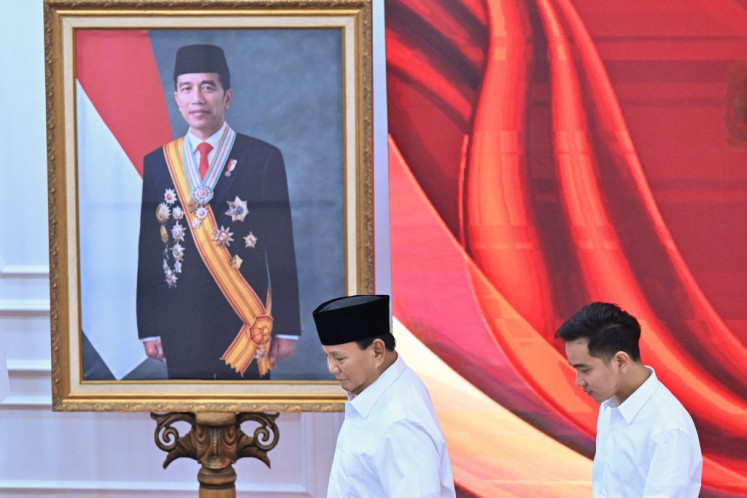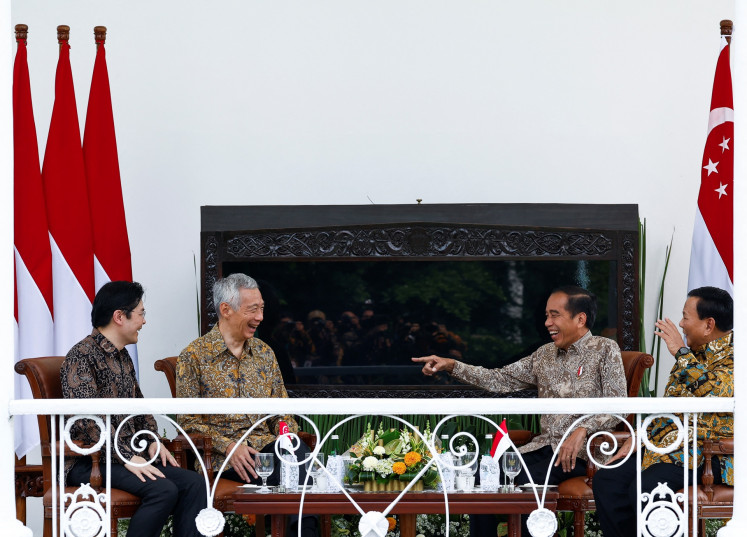Absence of master plan hampers city’s green space growth
Jakarta’s breakneck development continues to see green areas concreted over with all the associated urban problems that this entails because there is no overall plan, a conference has heard
Change Size

J
akarta’s breakneck development continues to see green areas concreted over with all the associated urban problems that this entails because there is no overall plan, a conference has heard.
The capital has long struggled to meet the target of transforming at least 30 percent of land in the city into green space, as mandated by the 2007 Spatial Planning Law, largely as a result of a lack of any grand plan, the city’s Forestry Agency park planning division head Hendrianto said on Tuesday in a discussion held by Jakarta Research and Public Policy.
The latest data show that the amount of green space in Jakarta stands at 14.9 percent, with less than half of that owned by the administration while the rest has been donated by the private sector, he revealed. The city aims to achieve 20 percent green space by 2030.
“The green space in Jakarta is 2.3 square meters per person. This is far lower than the average of 66.2 sqm per person in East Asian countries,” Hendrianto said.
The absence of a master plan means that many developers in Jakarta do not consider what the city actually needs, including which areas need more tress and green space.
He acknowledged that the city needed to take more of an initiative to realize the idea, which has long been in the pipeline. He specifically mentioned that Jakarta lagged behind Surabaya in East Java and Bandung in West Java in producing such a master plan.
Among the factors that should be taken into consideration in producing the plan are urban equity, community engagement, public health, local economies, historic preservation and transportation and land use, he said.
“We aim to finish the master plan by April so we can issue either a gubernatorial regulation or a bylaw on it immediately,” he said, adding that a team comprising environmental experts had been involved in the drafting of the master plan.
The city is taking Singapore as a benchmark for the master plan because “environmentally, Jakarta and Singapore share many similarities”, Hendrianto said, adding that “the plan is very detailed and water sensitive”, which means that it will be designed to accommodate the natural flow of water in the city.
The lack of green space in the city has been blamed for several problems occurring throughout the capital, namely floods, a clean water crisis, air pollution and even public disorder.
“Because young people do not have space in which to channel their energy, they turn to brawling,” Hendrianto said.
Brawling among youths in Jakarta has not shown any sign of abating, particularly in Pasar Rumput in South Jakarta, where three brawls occurred this month alone, resulting in damage to a Transjakarta bus shelter.
Creating more green spaces in the city was one of the priority issues Governor Anies Baswedan raised in his first days in office. He introduced the concept of the Taman Maju Bersama to replace the integrated child-friendly public space that had been introduced by his predecessor Basuki Tjahaja Purnama.
Trisakti University spatial planner Rustam Hakim said the absence of a master plan had led the city to a dead end without any concerted development.
“With a master plan in place, it would be easier for the administration to involve the private sector,” he said.
Expressing similar sentiment, Hadi Susilo, an urban water expert from the Bogor Agricultural University in West Java said the master plan being drafted should include a blue space concept, which develops urban design by considering the flow of visible water.
“The inclusion of blue space is important in Jakarta so that the city will see reduced flooding during the rainy season and will not face a water crisis during the dry season,” he said.









